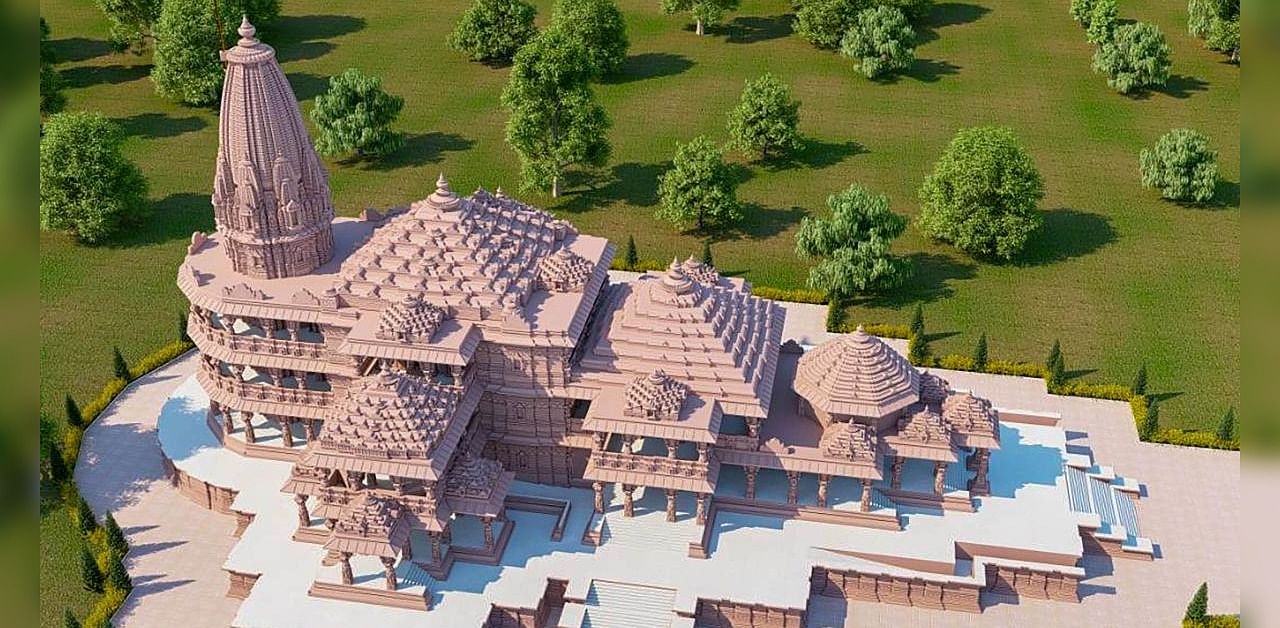
The 5th of August in 2020 will be remembered as the date when the much-anticipated and long-awaited Ram Mandir construction finally began.
Ever since the Babri Masjid demolition in 1992, the Ram Temple has been a topic of intense discussion in Indian society, engulfing the socio-cultural and political spheres. With this ‘bhoomi pujan', a lot of narratives will finally be put to rest. The oft-used and probably most famous slogan that defined this saga - 'mandir wahi banega' - has run its course as the promised construction is finally taking place. The phrase must now look to change its grammatical tense.
'Mandir wahi banega' has been synonymous with the Ayodhya tale. It has remained in vogue ever since some outfits decided and declared that a Ram Mandir should replace the Babri Masjid. When and how did the term originate? No one seems to know for sure. It's like those age-old phrases, the folktales whose presence is perceived but whose birth remains in mystery.
'Mandir wahi banega' has been present so long that it has formed a discourse like a river that slowly and steadily carves out a route for itself. And like a river's tributaries, the phrase has assumed different meanings and distinct reasons for popularity in people's minds. For those who believed in the Ram Temple and worked tirelessly for the idea to take a realistic shape, the phrase has been a motto, a mandatory chant. For the fanatics, the phrase has been a symbol of intense hope, carrying a streak of inevitability. Those in opposition, on the other hand, used it as a symbol of taunts and mockery. As it became prominent, jokes and memes were created, giving it a humorous flavour. Stand-up comedians began to use it as a symbol in performances, with Kunal Kamra using it time and again to put forth his ideas. There were even songs made from the slogan, with people using it for festivities, dancing in a frenzy.
Also read — Ram Mandir bhoomi pujan's muhurta time and more
Arguably, no other phrase with a religious context has gained as much prominence in India as this one. So much so that about two years ago, a Bhojpuri film was made with the title Mandir Wahi Banayenge. According to an article in The Hindu published in 2018, when searching for the 'Ram Janmabhooomi' site on the Google Maps app on a mobile, 'mandir yahi banega' appeared as a point of interest, close to the disputed site. Google attributed the lapse to "unhelpful edits suggested by users” and said that it had "fixed the issue" by taking steps to get the marker removed.
And can politics be far behind? Over the years, many politicians have used the phrase to appeal to voters with promises that the temple would be built. Others pointed out that while the phrase might sound serious, the dream would always remain a distant reality.
On June 18, 2019, BJP MP Sakshi Maharaj took his oath in the Parliament and ended his speech with the chant, "Jai Shree Ram". In response, one of the MPs said, "Mandir wahi banayenge". In December 2017 on the eve of the Gujarat Assembly elections, a song on Mandir Wahi Banayenge was played at a Yogi Adityanath rally. These are fragments in an immense chapter of Indian politics where 'mandir wahi banega' was forged into a decisive factor in elections.
'Mandir wahi banega' will soon mould itself into something more present, something that indicates the completion of the mission. The slogan, however, will also live on as the representation of a riveting phase in the consciousness of modern India.